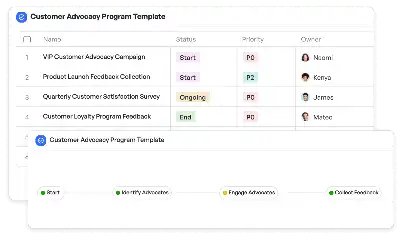Physics Engine Performance Tuning Guide
Achieve project success with the Physics Engine Performance Tuning Guide today!

What is Physics Engine Performance Tuning Guide?
Physics Engine Performance Tuning Guide is a comprehensive framework designed to optimize the performance of physics engines used in various applications such as gaming, simulations, and virtual reality. Physics engines are responsible for simulating real-world physical interactions, including collision detection, force calculations, and object dynamics. This guide provides detailed methodologies to identify bottlenecks, enhance computational efficiency, and ensure seamless integration with other software components. By leveraging this guide, developers can achieve higher accuracy and faster processing times, which are critical for applications requiring real-time physics calculations.
Try this template now
Who is this Physics Engine Performance Tuning Guide Template for?
This template is tailored for software developers, game designers, and simulation engineers who work extensively with physics engines. Typical roles include game developers optimizing physics for immersive gameplay, simulation experts ensuring accurate real-world modeling, and VR developers enhancing user experience through realistic physics interactions. Whether you are working on a high-speed racing game, a space exploration simulation, or a VR training module, this guide is an invaluable resource for achieving optimal performance.

Try this template now
Why use this Physics Engine Performance Tuning Guide?
Physics engines often face challenges such as computational inefficiencies, inaccurate collision detection, and integration issues with other software components. This guide addresses these pain points by providing step-by-step instructions for optimizing collision detection algorithms, enhancing force calculation methods, and streamlining integration processes. For example, in gaming scenarios, poorly tuned physics engines can lead to unrealistic object interactions, detracting from the user experience. By using this guide, developers can ensure that their physics engines deliver precise and efficient simulations, tailored to the specific needs of their applications.

Try this template now
Get Started with the Physics Engine Performance Tuning Guide
Follow these simple steps to get started with Meegle templates:
1. Click 'Get this Free Template Now' to sign up for Meegle.
2. After signing up, you will be redirected to the Physics Engine Performance Tuning Guide. Click 'Use this Template' to create a version of this template in your workspace.
3. Customize the workflow and fields of the template to suit your specific needs.
4. Start using the template and experience the full potential of Meegle!
Try this template now
Free forever for teams up to 20!
The world’s #1 visualized project management tool
Powered by the next gen visual workflow engine




